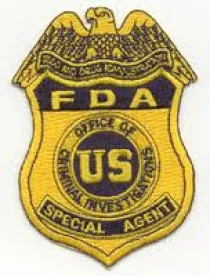Manufacturers seeking to enter the medical food market face increased challenges.
The Food and Drug Administration (FDA or the Agency) has issued several Warning Letters to manufacturers of medical foods recently—including two letters in December 2013—suggesting that the FDA’s final guidance on medical foods may narrow the Agency’s interpretation of the definition of “medical foods.” In its August 2013 draft guidance, “Frequently Asked Questions About Medical Foods; Second Edition” (Draft Medical Food FAQ),[1] the FDA included new content related to the definition of “medical foods” and the types of diseases and conditions that a medical food could be used to manage. This new content prompted the submission of several comments from stakeholders, who were concerned that the draft guidance too narrowly defined what is considered a lawful “medical food.” On December 26, 2013, shortly after the close of the comment period for the Draft Medical Food FAQ, the FDA issued two Warning Letters to medical food manufacturers, enforcing the Agency’s interpretation of medical foods as set forth in the draft guidance. Issuance of these letters sends a strong signal to the industry that the FDA’s final medical food guidance may maintain the narrow interpretation set forth in the Draft Medical Food FAQ.
Draft Medical Food FAQ
In comments submitted on the Draft Medical Food FAQ, several stakeholders expressed the view that the FDA had improperly limited the definition of “medical foods” beyond what is set forth in the statute in violation of administrative law principles. The statute defines a “medical food” as “a food which is formulated to be consumed or administered enterally under the supervision of a physician and which is intended for the specific dietary management of a disease or condition for which distinctive nutritional requirements, based on recognized scientific principles, are established by medical evaluation.”[2] However, the FDA states in the Draft Medical Food FAQ that it considers the statutory definition of medical foods “to narrowly constrain the types of products that fit within this category of food.”[3]
In the Draft Medical Food FAQ, the Agency includes several criteria that it asserts clarify the statutory definition of “medical food.” These criteria are derived from the FDA regulations that establish when medical foods are exempt from the nutritional labeling requirements of 21 C.F.R. § 101.9. The FDA’s labeling regulations include five criteria for when a medical food is exempt from the nutritional labeling requirements, including that the product “is intended for the dietary management of a patient who, because of therapeutic or chronic medical needs, has limited or impaired capacity to ingest, digest, absorb, or metabolize ordinary foodstuffs or certain nutrients, or who has other specially medically determined nutrient requirements, the dietary management of which cannot be achieved by the modification of the normal diet alone.”[4] For example, the Draft Medical Food FAQ states that the FDA does not consider diabetes to be a condition for which a medical food could be labeled and marketed because a “regular diet can be modified to meet the needs” of a diabetic individual.[5] Comments submitted to the FDA state that this criterion—that a medical food must be intended to manage a dietary condition that cannot be managed “by the modification of the normal diet alone”—is neither included in the statutory definition of “medical foods” nor in any regulation defining “medical foods.” Therefore, commenters expressed that any such definitional criteria that would be enforced against manufacturers should undergo notice-and-comment rulemaking and be promulgated as regulations rather than guidance.
Warning Letters
Notwithstanding the concerns expressed about the FDA’s statutory authority, the Agency issued four Warning Letters to manufacturers of “medical foods” between April and December 2013.[6] In each of these letters, the FDA asserted that the products being sold did not meet the definition of “medical foods” because they were not intended to manage a dietary condition that has “distinctive nutritional requirements.” The products identified in these Warning Letters were intended to manage a wide variety of patient conditions, including neuropathy, cardiovascular disease, inflammatory bowel disease, asthma, peripheral artery disease, chronic fatigue syndrome, fibromyalgia, Crohn’s disease, Alzheimer’s disease, polycystic ovarian syndrome, and diabetes.
In each of the four letters, the FDA cited its general view that medical foods are intended to treat conditions that cannot be treated by the modification of the normal diet alone. In one of the letters, the FDA specifically applied this criterion against a manufacturer marketing a product intended for patients with diabetes, stating that it was “not aware of any distinctive nutritional requirement or unique nutrient need for patients with Type 2 Diabetes that cannot be met through dietary modification alone.” Notably, medical foods for diabetics were a particular focus of comments submitted to the FDA docket on the Draft Medical Food FAQ.
Implications
The Agency has long made it clear that designation as a medical food is a narrow and restrictive process. Ingredient manufacturers exploring potential medical food pathways should carefully consider the recent Warning Letters in view of their nutritional data and research for bringing a medical food product to market. Because the FDA does not require prior review and clearance or approval of a medical food, the first contact from the Agency may come in the form of a Warning Letter.
The FDA is currently reviewing the stakeholder comments on the draft guidance and has not indicated when the final guidance will be issued. It will be important for the medical food industry to monitor the status of the guidance and any continued enforcement efforts, to determine whether the Agency will be responsive to the industry’s comments and revise its interpretation of the medical food category or continue to enforce the more limiting criteria set forth in the nutritional labeling regulations.
[1].View the Draft Medical Food FAQ here.
[2]. 21 U.S.C. § 360ee(b)(3).
[3]. Draft Medical Food FAQ at 4.
[4]. Draft Medical Food FAQ at 5.
[5]. Draft Medical Food FAQ at 12.
[6]. View the FDA’s 2013 Warning Letters on medical foods here; here;here; and here.




 />i
/>i
